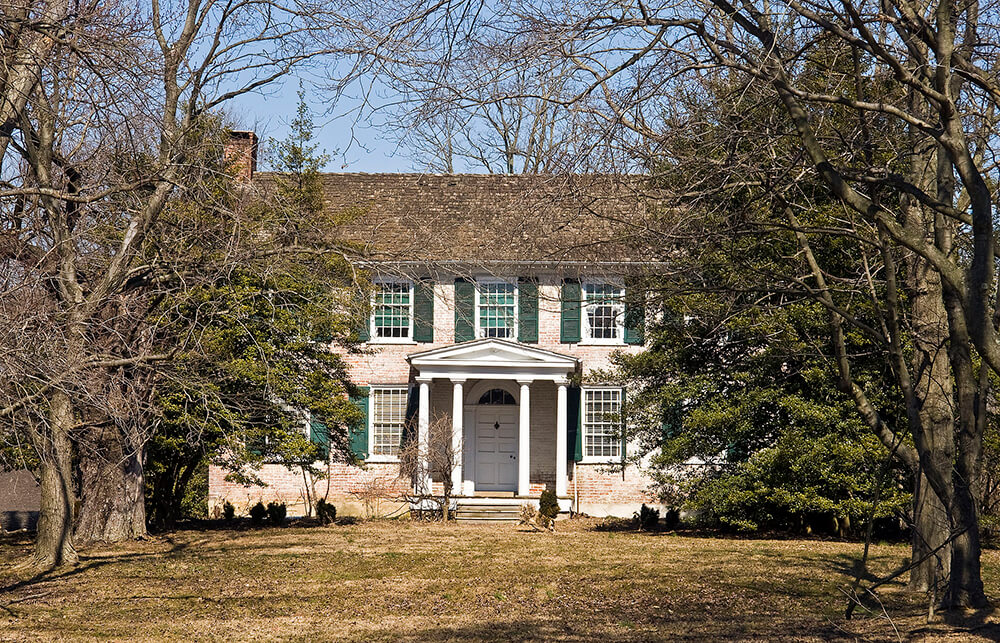La Grange History

“La Grange, also known as Samuel Henry Black House, is a historic home located near Glasgow, New Castle County, Delaware. It was built in 1815, and is a two-story, five bay, Federal style manor house. The front facade features a pedimented entrance portico. Attached to the house are two dependencies. The western wing is a former smokehouse and the eastern wing is a kitchen.
It was added to the National Register of Historic Places in 1974.”
Reference: Wikipedia
“From 1815-1820, Dr. Samuel H. Black, physician, farmer and politician, conducted seminal agricultural experiments on his Glasgow, DE farm. His work on soil amendment and replenishment lead the transition toward more scientific agriculture methods in America. Prior to his work, farming in Delaware had been in decline, due to increasing soil exhaustion. Many farmers were abandoning their fields and leaving for what is now the Midwest.
Dr. Black’s farm at Glasgow became known as ‘La Grange,’ a name that was suggested to him by General Marie Joseph Lafayette, with whom he was acquainted. Still standing on the farm are Black’s original 1815 Federal style manor house, and the earliest documented example of a granary building designed to allow wagons to pull through it. Both are listed on the National Register of Historic Places.
In addition to his agricultural work, Dr. Black was also an early proponent for vaccination against smallpox. In order to gain the confidence of the local population, it is said that he took his previously vaccinated son, Robert, to a nearby Native-American encampment that was suffering from smallpox and had his son remain among the diseased natives, proving that the vaccine worked.
However, even before Dr. Black’s work, the La Grange farmland had seen important history. On September 2, 1777, hundreds of British and Hessian soldiers were encamped on the farm, then owned by Dr. Black’s future father-in-law, Robert Middleton. The next morning, these soldiers marched two miles to the northeast and met Washington’s forces at the battle of Cooch’s Bridge, the only Revolutionary War battle fought in DE.
Enduring on the farm are remnants of defensive earthworks, constructed by the British to protect their position. The earthworks lie alongside the only known portion of the original 18th century road between Elkton, MD, and Glasgow.
And in 1804, Benjamin Latrobe surveyed the land around Glasgow and began construction of a feeder canal, as part of an ambitious plan to connect the Delaware and Chesapeake waterways. Although the effort ran out of money, an intact remnant of that canal still exists on the farm property.
In 1942, Anne Barczewski and her late husband, Steven, bought the historic 236-acre farm and home and later restored it. It was operated as a dairy farm (West End Dairy) until the 1960s.”
Reference: Pencader Heritage
